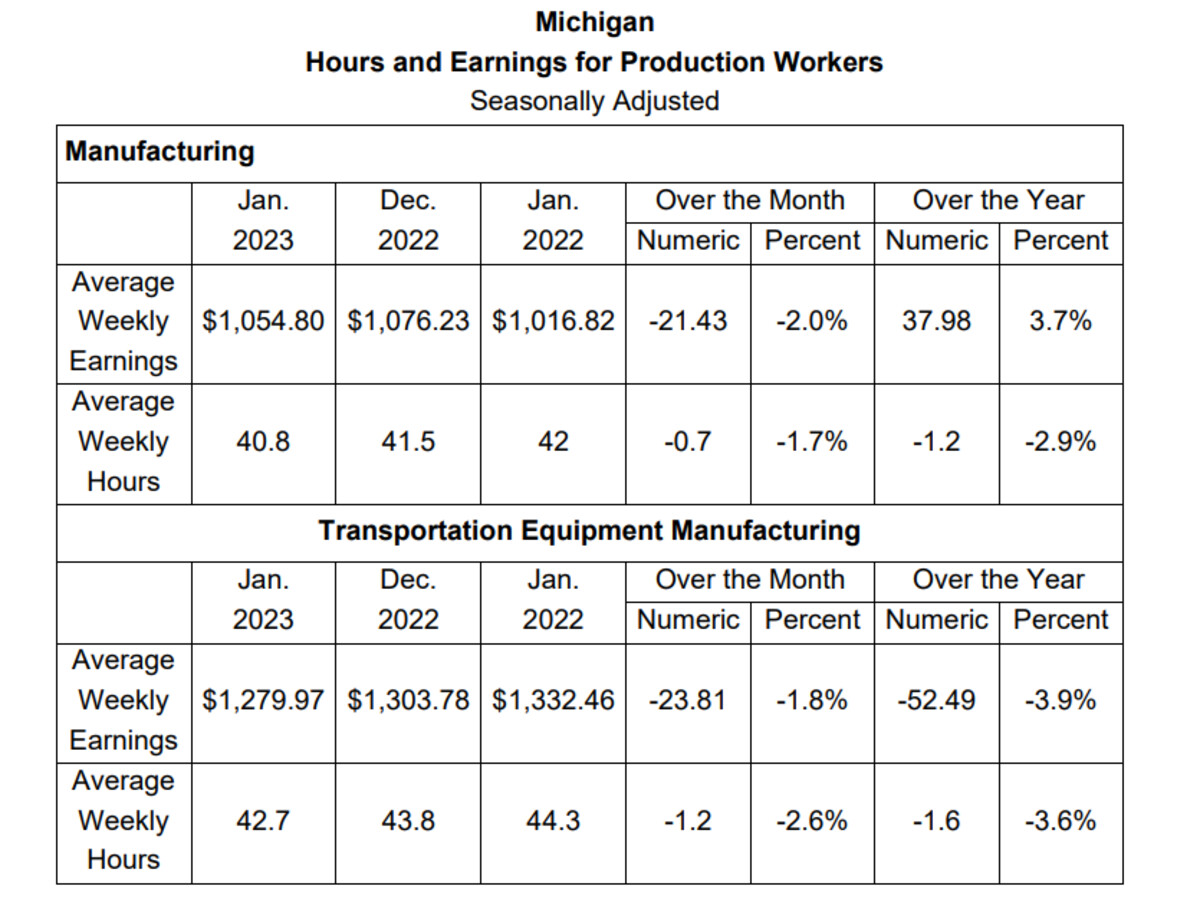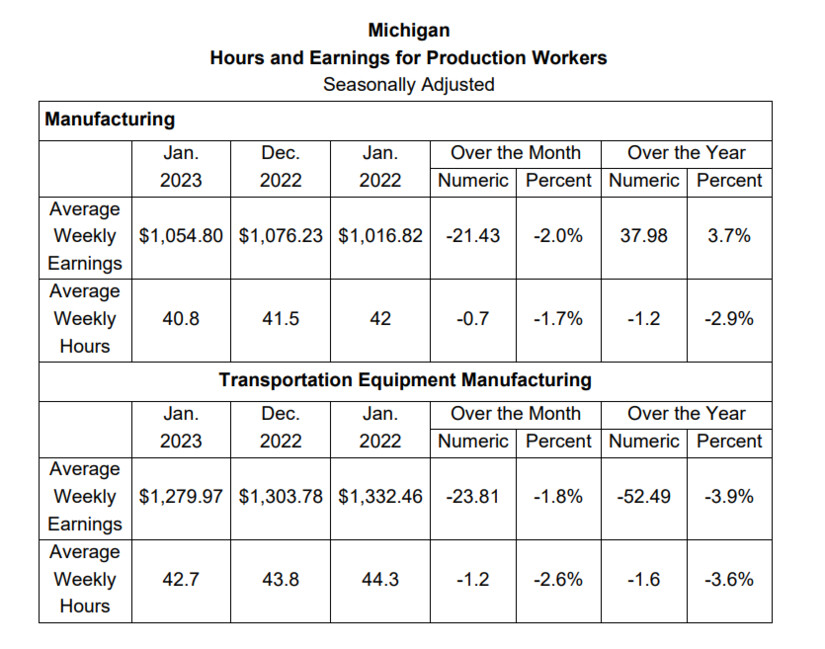Image

Michigan’s seasonally adjusted unemployment rate was unchanged over the month at 4.3 percent, according to data released today by the Michigan Department of Technology, Management & Budget. Total employment in the state advanced by 3,000, while unemployment remained constant over the month, resulting in a minor workforce increase of 3,000 in January.
“Michigan’s labor market saw little movement between December and January,” said Wayne Rourke, labor market information director of Michigan’s Center for Data and Analytics. “The state’s unemployment rate remained flat, while payroll jobs rose slightly.”
The national unemployment rate declined by one-tenth of a percentage point between December 2022 and January 2023 to 3.4 percent. Michigan’s January jobless rate was nine-tenths of a percentage point above the national rate. Over the year, the U.S. unemployment rate receded by 0.6 percentage points, while Michigan’s rate decreased slightly by one-tenth of a percentage point since January 2022.
Labor force trends and highlights:
Michigan payroll jobs edge up slightly over the month
According to the monthly survey of employers, Michigan seasonally adjusted nonfarm employment advanced by 13,000, or 0.3 percent, during January. The total nonfarm job count was 4,403,000, with minor employment increases occurring throughout multiple industries.
Industry employment trends and highlights:
